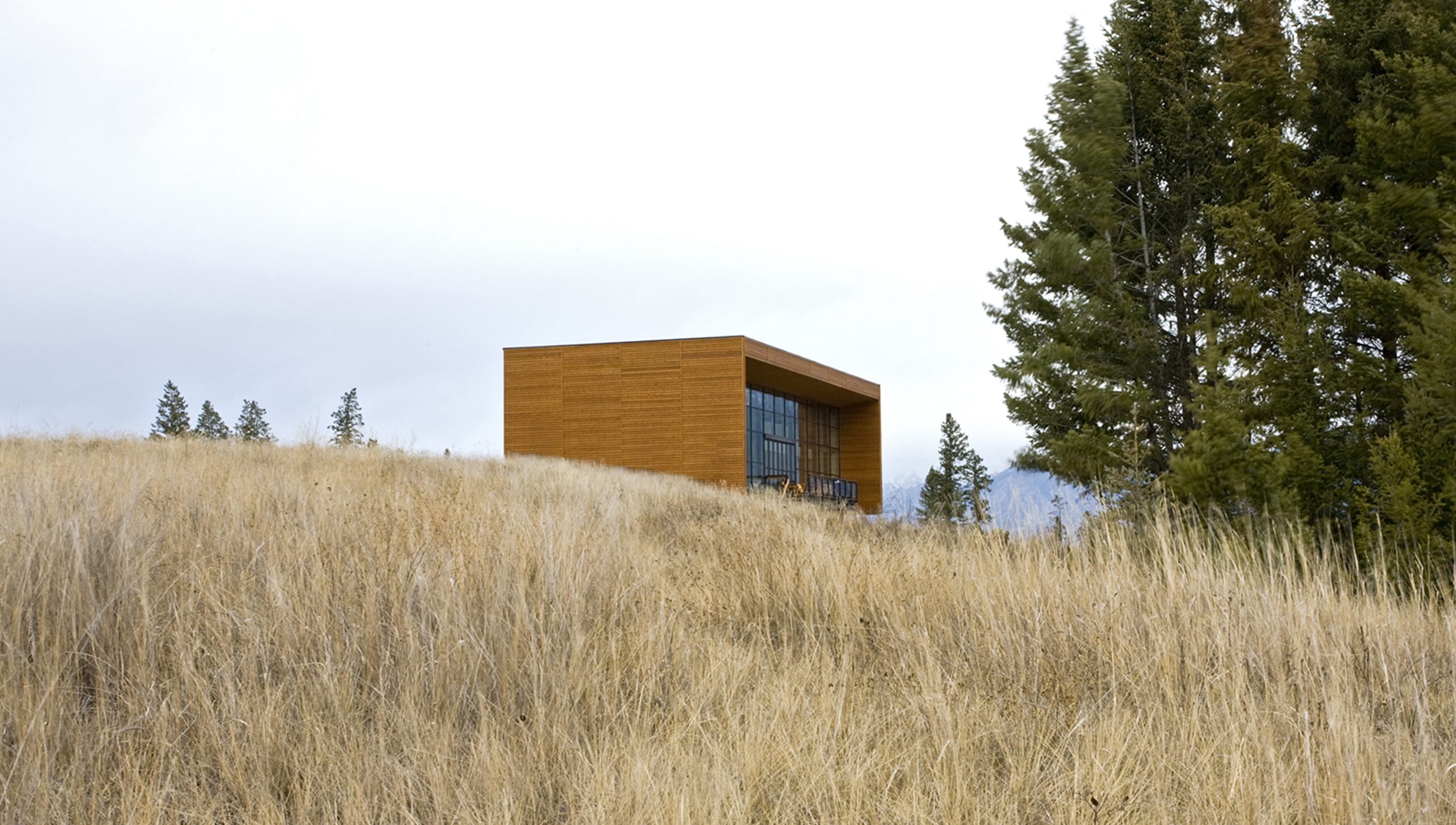
This project is a house for a family of four located on a 72 acre site on a ridge above the town of Invermere, British Columbia. The landscape is characterized by a wide open terrain of fir and pine trees sloping southward to unobstructed views of the Rocky Mountains and Lake Windermere.
The program priorities included a house that could bring the family together, be social in use and simple in form, celebrate the landscape and views, minimize the impact of the nearby traffic hum, and facilitate outdoor recreation.
The design explores the ideas behind an ‘imprintable architecture’; because of the palpability of the environmental conditions of the high plateaus of the Rocky Mountains, the design is conceived of as a neutral background that draws meaning from the interaction of natural phenomena and the traces of human occupation.
The simple orthogonal geometry serves as a constant frame against which to measure the continuously shifting environmental conditions of the site, while the plan offers a conditioned openness that generously accepts change and adaptability.
This project is a house for a family of four located on a 72 acre site on a ridge above the town of Invermere, British Columbia. The landscape is characterized by a wide open terrain of fir and pine trees sloping southward to unobstructed views of the Rocky Mountains and Lake Windermere.
The program priorities included a house that could bring the family together, be social in use and simple in form, celebrate the landscape and views, minimize the impact of the nearby traffic hum, and facilitate outdoor recreation.
The design explores the ideas behind an ‘imprintable architecture’; because of the palpability of the environmental conditions of the high plateaus of the Rocky Mountains, the design is conceived of as a neutral background that draws meaning from the interaction of natural phenomena and the traces of human occupation.
The simple orthogonal geometry serves as a constant frame against which to measure the continuously shifting environmental conditions of the site, while the plan offers a conditioned openness that generously accepts change and adaptability.
